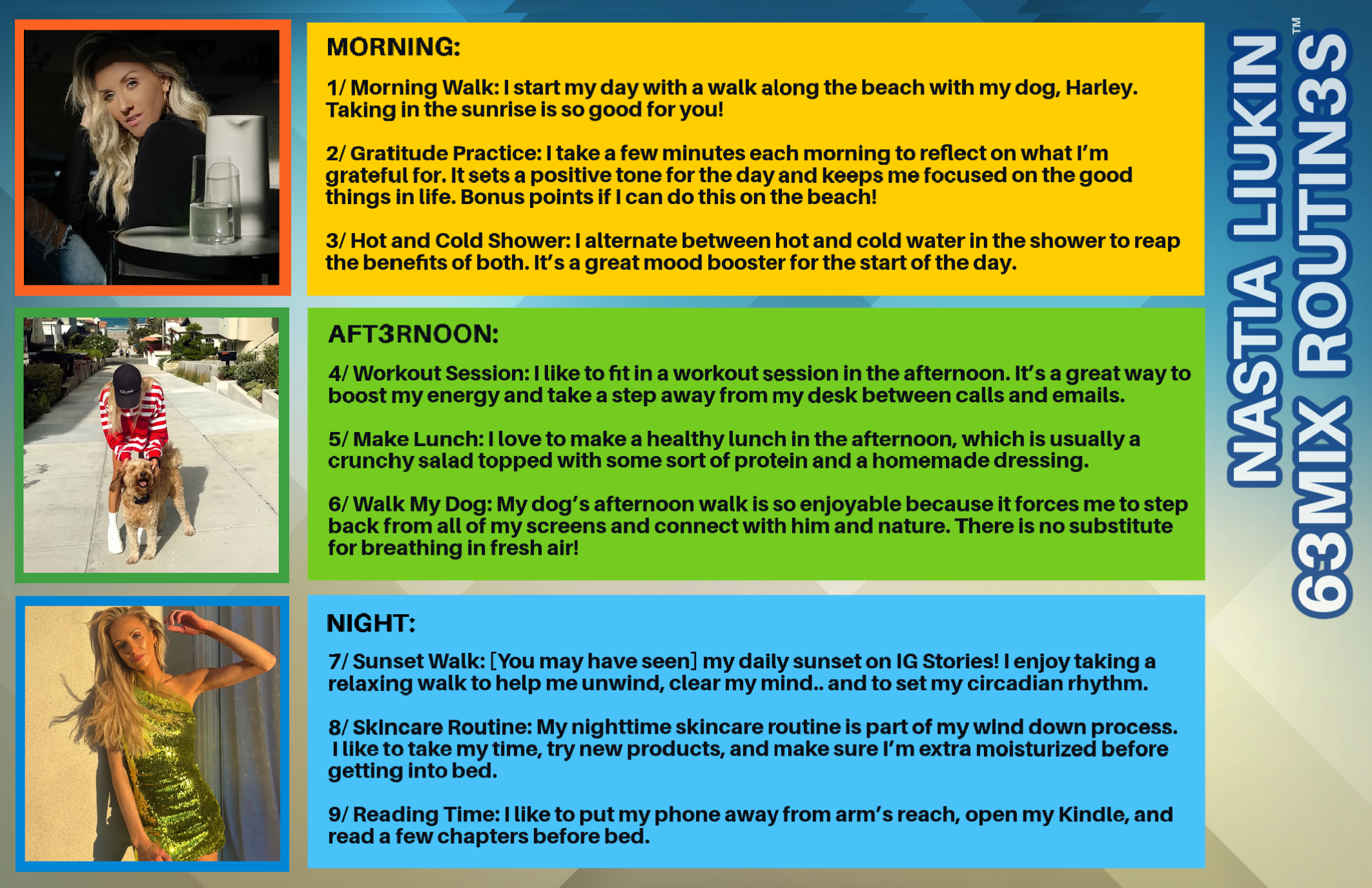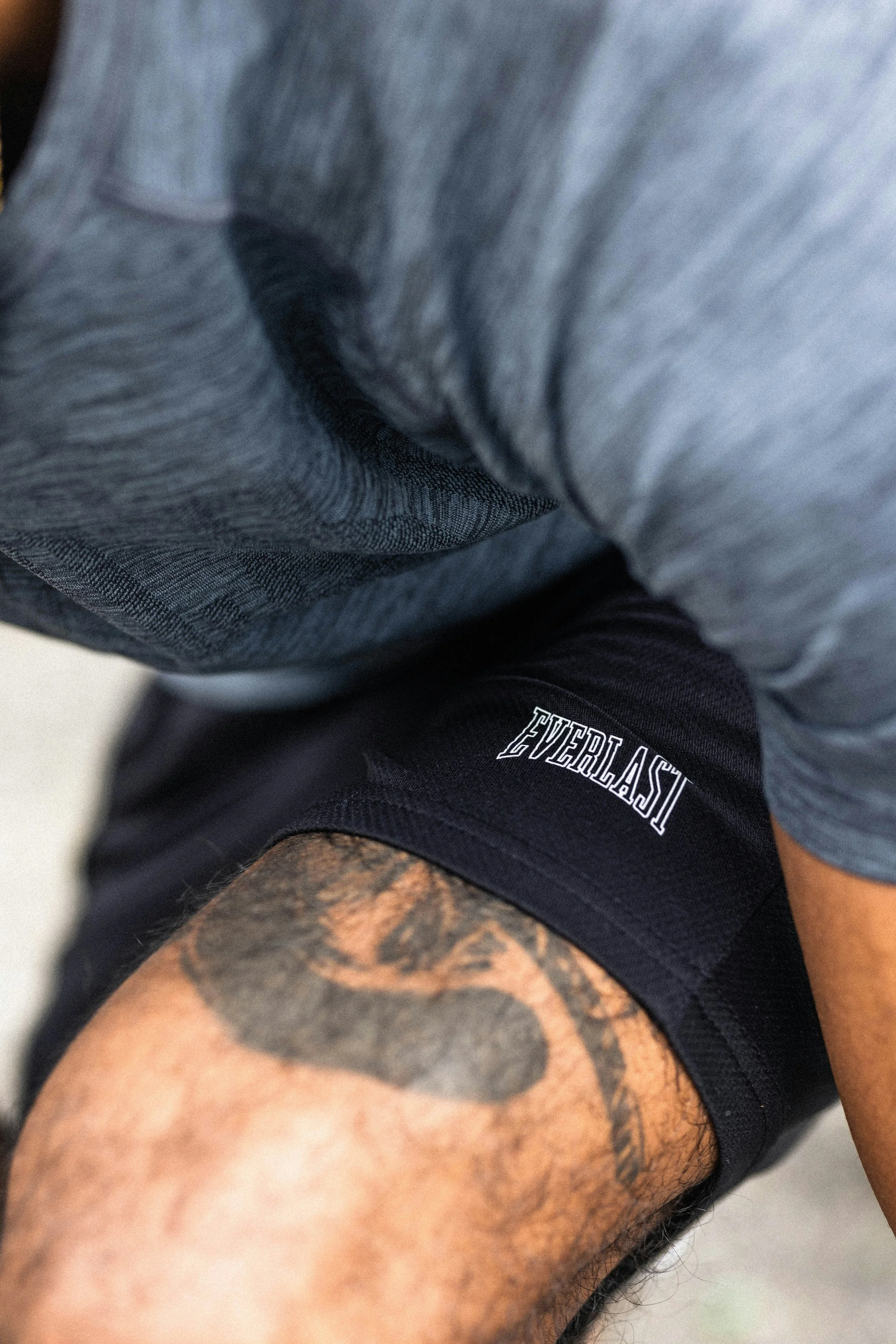AM: That is pretty impressive that that would be your first piece as it’s such an ambitious one to make and then not being in the industry and doing that is amazing. This is such a fashionable and technical forward product to create for the first piece of your assortment.
What do you feel sets yourself apart from other technical brands that are also in this space.
EH: I like to say that my approach has never really been rooted in the mountain in a lot of ways. Despite Hawaii having mountains, it’s not a big part of what you think of when you think about the big brands like The North Face or other brands that are rooted in the mountains and out in Jackson Hole. I never grew up in the mountains, in the cold, or even being in temperate spaces that needed mountain clothing. In a lot of ways, the brand itself is really based around water which is interesting. I grew up around the ocean and understanding that precipitation – snow, rain all comes from the ocean in the hydrological cycle and then comes back down. So it’s all based around the elements moreso than mountainous conditions. It’s just a little bit of a differentiated look at how we navigate this space. Also, not coming from this industry, not having the background of working in fashion and making super technical garments, I made things around basic everyday wearability. So it's all about comfort, stretch, and quietness things like that which people don’t really quite grasp when you are looking for performance. I’m not going to summit Mt Everest. A lot of people want to and I’m probably not going to do it myself. I want to make things that you can wear and transition from. If you go in the mountains, you will have a product that works, but you can also wear the same product outside of the environment as well to be comfortable and to wear it in your everyday.
A lot of our products are built with really comfortable materials. There’s stretch and they all have water resistance. They all have really good wind stopping properties which is really awesome. I can say that 1 big differentiating element is that we have really high collars which is great because you can actually tuck yourself in.
AM: Exactly.
EH: If you wear it correctly, you can actually cover all parts that would let wind in your body. So that’s very important. When I was living for Boston for a little bit, I was walking to work and I found myself wearing a ski jacket actually – it was a Burton jacket. I wore it to work because previously, I was wearing a men’s Peacoat at the time and I felt that it didn’t do anything for me when it came to protection. I was walking to work and I was having to go outside and it did look better, but it just didn’t work. I found that more and more, the trend was that people were wearing products around functionality, utility, and usefulness. So they were wearing mountain wear which is interesting because there are these big brands designing for the mountain, I’m not near a mountain, but I am wearing those items and it makes sense. I would say that Terracea is the evolution of that to say that it is blending a little bit of that athleisure aspect of it for that everyday lifestyle and activity to also include the technical side of garments that have hard shell capabilities whether it is lamenated, water proof jackets that actually block water to products that actually resist and have a bit more comfort around it. I have to say that it is the best of both worlds and it kind of transitions seamlessly from reactive based mountain stuff to your everyday.
AM: You have a commitment to sustainability. How does that flow through the brand?
EH: I’ve always been conscious of the impact of our carbon footprint on the world. First of all, we’re a very small company truthfully. So we do not make anywhere near the volume of some of what these bigger players do. Even then, we do our best to offset as much as we can for the environmental impact. A big thing is that we have been PFC free since early 2022 before all the regulations happened just because I felt that it was the right thing to do knowing that there were harmful chemicals going into the ground and I want to avoid that as much as possible. The truth is that some of that stuff does work better and you look at brands like Goretex that have changed their technology because of this. Switching to something that is not harmful has always been part of our DNA. Anything that we use for insulation and people don’t know this, but it’s all either recycled or repurposed products for insulation materials.
For example this is our Catnap Full Zip Women’s Puffer it's a hybrid so the top part is completely waterproof believe it or not. The bottom half is actually puffer fabric. I like to say like Canada Goose, but honestly nicer and at a much more accessible price point. The truth is that this jacket has a technology called Downlight which is actually taking used down and taking them from places like a duvet cover and they repurpose or they pack the down to fill it on a certain power level. So for example, we have one that is 650 fill which is the equivalent so what they do is take the down and repack into the insulation type and they are not taking from new products or new animals to make this.
We also use Primaloft which is another great technology. So, this is our Women’s Camara Jacket which is essentially what I like to call, the representation of Terracea in a lot of ways. It's a full technical ski jacket, but it really looks like an every day coat. It’s great, it’s super comfy, and it’s super quiet which is really cool.
AM: I love that I’m not hearing a lot of jangling when you’re holding it.
EH: That’s because I chose a lot of the fabrics and I base a lot of it on noise. Does your armpit go against your side and make that crinkling noise so it sounds like paper? If so, then we probably shouldn’t do it. We also use insulation that is fully recycled. So Primaloft, the package that we purchase from they source it from recycled water bottles, discarded plastics, and things like that which creates their Primaloft Eco which is what we use. We have always been conscious about the environment and we do our best to not overproduce. Being a small company we have the luxury to be able to not over make stuff that we would have to discard. We’re very careful with what we make and trying to sure that what we do so that we’re not making an impact negatively on the environment.
AM: You’ve been speaking and I love the everyday factor of it all and I think that that’s amazing. Are there pieces that if someone is interested in doing a specific sport, that lend themselves to a designated sport?
EH: You know, that’s a good question. I think the best way for me to say it is to say that we try to stay activity agnostic and just kind of let the product do its own marketing in a lot of ways. Because, a lot of people say, “well clearly, you’re just making ski products.” It’s a ski wear shell, it’s a ski wear bib, and things like that. In a lot of ways, it’s kind of true, but also it’s like – I never had the ability to say that because I’m a skier, I want to make things for ski. I don’t and truthfully, I only skied once in my life which is funny enough! In a lot of ways, a shell is a shell. The way that I see it, a 3 layer shell is a thicker shell meant for the Winter that blocks snow and sleet. Sometimes you wear a shell over an existing garment to protect you. In a lot of ways, that kind of philosophy translates beyond kind of any activity.
We do look at ski and that’s kind of a big part of our inspiration because the stuff built into ski and snow apparel really does work. There’s things like hoods that protect you, cinch cords and even things like powder skirts – there’s not that much powder in the East Coast and I’m sure in the Midwest it’s the same but it’s great for wind. In a final way to protect as a gusset, your hip and waist area actually prevents wind from coming up which is actually a very big part around here.
We’re kind of reframing things and taking inspiration from mountain apparel technology and try to apply it more into an every day lens. I think that we’re getting better and better as we go. Truthfully, when I started out, I couldn’t break the mold too much just because of who we worked with and sort of the ways that we had to sell our products, but the more that we start to get into our identity and what makes Terracea different like you said – we’re going to lean into this lifestyle athleisure lens I think for our products which is exciting for me.
AM: That’s really cool.
Tell us specifically about the women’s assortment and what are 3 key pieces that we should know about?
EH: Of course! We do take a lot of feedback from our women consumers and testers who do wear our garments. Knowing that we just can’t force a fit for anyone and it’s a specific fit for women in terms of body shapes. We have a lot of products that I would say kind of cater to women. I would say that this one right here is our Vinda, a lightweight puffer that truthfully is a really good product. It’s got eco-friendly DWR which is great and it actually repels water. But it also has a lot of cool tech. We actually have laser cut arm holes. We don’t think about this, but this is also a waterproof patch on the front of this as well. So anything that you put in here you don’t have to worry about getting water in this zipped area because actually, you’re protected which is great. It’s a hybrid between mountain wear and that every day wear kind of build. This one actually uses another kind of recycled fill called Thermal Cluster. It’s super super warm, but it’s also quite light. I like to say that it is our best all around jacket that we offer. We have a men’s version of this jacket which is the same and it just has slightly different colors and is a boxier shape.
Beyond that, the Camara has all of the bells and whistles. This is kind of our every day, I’d like to say that it’s an every parka in a lot of ways.
AM: This is my favorite piece on the women’s side of your collection. I love this.
EH: Oh thank you! I appreciate that and I like it too truthfully. I wear it a lot especially when it starts to get colder and you don’t want to layer too much. I just want to wear one jacket that will keep you warm and if that is your thought process, this is your go-to.
It has a 2 way zipper and it also zips up from the bottom as well. If you’re taking your jacket off and your in the car starting it, I think about a lot of things when it goes into the design. If you’re sitting in the car waiting, you can take your jacket off, but you also don’t want to sit with it on and feel all bunched up. So I think about things from a usability perspective. I also have this cool element. All of our products have this raised embossed of our logo.
AM: I love that!
EH: I like to say that it is a little boring for ski shops that are looking for flashy outerwear. But that has never been my purpose. I wanted to make a better jacket which meant I wanted to wear it so it didn’t look obnoxious and different when it was off of the slopes. So we got into embossments because it’s a little more subtle. Lastly, we have the Women’s Catnap which we talked about a bit before. If you look at a system, it’s actually warm, warmer, warmest, so it’s ac tually our warmest product. I can attest that this will keep you warm, dry, and comfortable outside no matter what. When it’s actually getting cold and you can’t wear just a sweatshirt or something that is knit and you want to repel water – this is very warm. We do try to do a bit of a tonal block. The top half is made of a 20K waterproof fabric which no one else does by the way. This will actually block water like nothing else and we take a top down approach. So a lot of times when you’re standing up, most of the water will accumulate on the top half of your body. So you block that with a waterproof fabric that actually makes a lot more sense then having it across the whole thing and the bottom of this jacket has the puffy polyester fabric. All of our zippers are also YKK Aquaguard which means that they are completely waterproof too. Our jackets have that bit of utility wear where you technically could wear it and I have worn the men’s version when snowboarding. We have tested it out in more cold environments. Everything kind of works seamlessly together. Those are the 3 women’s pieces that I wanted to be able to show that are kind of a system product that we offer.
AM: I have to say that the Vinda with the embossed logo on it, that is such a high end style aesthetic to put in. We most recently did a photoshoot with a track set that had this kind of embellishment and there is something that is a bit of a hat tip to quiet luxury about that which reads differently than having a visually massive logo that is a Colorblock or something of that nature. It’s not to say that there is anything wrong doing that, but there is something understated and very IYKYK when you're looking at the brand so what brand so what a great style choice that you included in there!
EH: I appreciate that and I thank you for that. Kudos to our designer Mike who had a lot of decisions that were made in the aesthetics in the products that we wanted to portray. I knew that when I started this company, I didn’t want to make the same non-apparel. Everything looks kind of the same and things don’t fit this more modern and stellar angle that I really wanted to go for. I think that with our designer’s help, he really helped us shape the look and the feel on these products that they look great and that they look elevated and they look quality no matter where you go.
AM: Let’s do the same thing as it pertains to the men’s assortment and what are 3 key pieces that you want to highlight?
EH: Before we do that, I do have a few unisex pieces that I want to be able to show you. We have our sweatshirts as well as the logo on this hat. It’s actually a puff print which that’s really cool. It’s a little extra which is pretty neat too.
AM: I love that!
EH: We also have a heavier hoodie which has a little bit more weight. We also have a tech hoodie which is also water resistant too, but that’s more of a technical product too.
For men, we have the equivalent of the Magnus Thermal Insulated Jacket. I love that you’re in my showroom seeing all of this! So our Magnus for men has the same thing with the embossment on the soft shell. It’s the same thing as well, really high quality zippers. We have this things for the zipper which is called a Semi Lock. When you have the zipper tag flat against your chest, the zipper will not go down which is great when you have to partially unzip and you want to keep it thermal regulated it won’t go anywhere. When you flip it upwards, the zip will move with your body which is kind of cool.
AM: Once again with all of that zipper action, it’s still so quiet.
EH: Yeah it’s great technology! It’s a great looking product to as I put this one on. I truthfully wear this every single day! It’s a great piece to wear when you’re just walking around town. It looks good and you can size up if you want to layer underneath. For me, if I wear it true to size, I can wear just a sweatshirt underneath it. But if you’re doing an activity and really want to layer up, then you should size it up. I’m sorry I like to geek out on stuff like this.
AM: Oh no, I find this really interesting as I love to get into the nitty gritty and to hear these kinds of details. I find that it is very important to understand the why. Why does someone have the desire to purchase a specific item from your brand, what are the things that you’re doing in your space, how is it differentiated so I find this highly interesting.
EH: Awesome! I’m glad! I can go on for hours about this and I have bored people to death with me talking about details. But that is what I really care about. I just wanted to make products that made sense for my lifestyle and also for what I felt was kind of a gap in the marketplace. A lot of times, you want something that just looks better and feels better on you and sometimes people have a hard time finding them and I wanted to be the place where they could.
Even things like this, there is a bit of elastic around the hood. It goes around your head or your beanie. So you could sit it on there and kind of cinch it. Again, there’s that high neck which we talked about earlier.
I also wanted to show you something that is different than the insulator, this is a shell known as the Sorrel. We actually just won an award too from Outside Inc’s Ski Mag and noted us as Best Overall Shell of the Year!
AM: Oh wow, congratulations!
EH: Thank you! It was amazing. We have a really cool kind of storm flap that is magnetic powered. It’s pretty cool and people like that a lot. It’s a really good shell for everyday and I layer this over an existing sweatshirt sometimes when I want to go outside, but I don't actually want to be exposed to when it is windy and cold. It’s actually a really good product to wear. But again, it’s a 3L 20K waterproof shell that is great for skiing and snowboarding. But you can also wear it out everywhere for other purposes! To streamline it, we keep our cinch cords on the inside because I want it to look like a shell and not something that is intended to wear only when you ski. On the sleeve we have this zippered compartment which is for your ski pass and you can put in your RFID cards. I put my credit cards in there sometimes too.
AM: The Metro Card here in NY!
EH: Yeah! I call my Ski Pass my T-Pass because in Boston it’s your MBTA and they call it the T. It kind of really makes sense.
AM: Yup!
EH: The last one is called the Men’s Bear Hug which is a pullover anorak which has some really cool tech built in. I like the Women’s Catnap, but this is more of a style/fashion piece. I want to show you something that both the Men’s Bear Hug and the Women’s Catnap both have. It’s a magnetic pocket and it’s actually a magnetic rod that we actually substitute for the zipper pocket. It gives you easier one handed access into it when you’re getting your keys or things like that. It’s really cool stuff and I would normally put it on, but it would take awhile to get in and get out of it. It has full side zips and it’s also really a cool product. The same thing, the top half has waterproof and the bottom half is puffer fabric. But it really really looks nice. It might be our warmest product ever pretty much.
AM: That magnetic pocket it cool because when you don’t have your gloves on and you’re sliding your hand in there sometime the zipper catches it and snags your hand which is annoying. But having the magnet, you have that easy slide.
EH: We have a little bit of a pull too just in case you need the help and it just looks cool! It’s very functional and since that pocket is at an angle when it has a zipper and it catches, it can be awkward. So to prevent any kind of issues, we decided to do something a little different and we just thought outside of the box too.
That pullover style is a little tricky to get into sometimes but once you’re in and I can say for the Bear Hug especially, if you’re going to be outside in the cold all day doing something, you want to wear this as you will be so comfy and so toasty all day long. The response that we have gotten by Henry Swinson who is a local meteorologist in New England and he is outside storm chasing and reporting on the weather all day and he has been wearing our Bear Hug when he does that which is pretty cool!
AM: That’s pretty cool! You know if someone is wearing it storm chasing, there is something to be said for the quality of your pieces!
What are 3 accessories that you have that you would like for us to know about?
EH: I consider our sweatshirts as part of our accessories for this line. We have our hats and some neck tubes and things like that. We’re actually developing more accessories as we go. We have a collaboration of socks which is pretty cool. They are made in the USA right here in New Hampshire which is pretty interesting. We work with a local company called Minus33 and it is a strategic collaboration just because of the way that we are going with both of our complaints being here in New Hampshire in this state. It’s probably the best Merino wool socks that I have ever worn. You can wear them all day and for a whole week! They’re odor resistant and they’re also thermal regulating so they actually remove heat from outside. It’s really cool and I recommend you checking them out on our website.
AM: Are there new products coming out that may not be available on the website right now, but they will be that you can share with us?
EH: We are moving forward to the true era of Terracea which is all solutions for weather which means all seasons. Funny enough, being from Hawaii, we startd working in the cold for this company and making the best what I like to say is the best technical cold weather apparel that is out there. We’re actually moving full circle and going back to where it is warm as well. So when it comes to warm, it’s about changes in weather patterns where the cold is not as prevalent as much as here in the Notheast. The cold is getting shorter and the volatility is getting higher. That means we’re kind of missing a lot of pieces where it’s about rain and UV. We deal with that a lot more out of the year. So we’re actually, making a small capsule of Summer apparel which includes a rain shell which will kind of be our next level product I would say. It’s going to be designed with a different ethos in mind, and I can say that it will have some interesting elements to it. It’s really all about storytelling which is really cool and we will have a tech shirt and a tech short which is going to also be an interesting product for us. To round that out, we said that we would have a year around capsule collection that really speaks to our ability to enhance our experience outside no matter where you are.
AM: That’s great to hear. The first thing that I thought of when I was looking at your site and its assortment and it’s great to have categories in snow, but what about rain as that is also a significant part of the year. It doesn’t always snow year around and you can go to places where there is snow, but it’s a missed opportunity not to think and include the other elements as well.
What are you looking at in terms of 2025 whether it be innovation, technical fabrication, tradeshows that you will be at that we should keep an eye out for?
EH: We will have innovative technology that is coming out on our garments and unfortunately it’s a little early for us to tease that out. I will just say that it is really cool and something that really speaks to our brand genuinely and more so than other brands out there.
The fabrics that we choose will kind of continue in the same mold. It’s always a balance of performance for repelling water and wind versus comfort and sustainability. So that is always this intersection that we always have to meet as a business because truthfully, we did look at options that were 100% biodegradable and using bamboo and things like that which were good, but there is always a bit of a tradeoff when you consider whether it’s good when you’re outside and it’s raining all day or if it is really cold, is it going to protect you? There is always this bit of intersection where we have to have balance and that’s part of our thought process being Terracea. We consider all of these things and not just 1 thing whether it’s the best performing or the most sustainable. We really like to be there right in the middle.
For tradeshows, we actually decided to take a bit of a step back this year. We did do a few tradeshows before. We went to Outdoor Retailer, we did a couple of local tradeshows around here in the Northeast, but we are actually focusing a lot more on building our online presence so we are actually shifting to be more of a DTC business this year which has actually been working quite well. We’ve been able to organically tell our story and to reach a lot more people through the Internet through our marketing efforts. I would say that maybe late 2025/early 2026, you may see us again at these sort of tradeshows with our new 360 brand and collection which would make a lot more sense for us.
AM: I was going to ask as my fashion background started first in visual merchandising and then in wholesale, are there places that people can purchase your pieces outside of your website.
EH: We did sell last year to a couple of retailers and at our peak, we were actually in 35 retailers across the Northeast. We also had one in Lake Tahoe funny enough! We do sell some in REI in North Conway and kind of in more local places here. We’re kind of revisiting that approach. Right now, the main point of truth is our website terracea.com which is where we are trying to really engage our customers and trying to have that conversation with them. What makes our products different, how can you find out more about us, and we have a great customer service team as well as a great supporting cast behind the website. Anything that people have questions for, we can always answer and make it a seamless shopping experience for them.
AM: You also brought on Vic Satir, the former Global Merchandising Leader at Nike which is amazing. How does this fit into your brand and where you see it going forward?
EH: Vic is awesome and we have been working together for almost 3 years now together. Kind of as a consultant at first and now he is really a fulltime team member leading the team as GM as well as leading them as Strategic Thought Leader for us. He has really been helping a lot with me in terms of elevating the brand and sort of bringing everything together. We really have a full team now in this business from all aspects and we have really been kicking in on all cylinders. Vic has been helping a full team now in this business from all aspects and we have really been kicking in on all cylinders. Vic has been helping me reshape on how to move the brand forward in a higher level perspective. I can say that I love doing that too, but my strength has been guiding the business, how we run, the operations and that has been my strength in a lot of ways. He compliments that by saying how do we think and not just in next year, but in the next 3-5 years down the road? We’re looking at where we can pivot towards and we’ve been kind of working together as a tandem on that side which has been pretty good.
AM: That’s amazing and has there been anything else that we haven’t talked about that you do want to share with us?
EH: I’ve been talking to people a lot about my journey and it’s really been a story about hard work and perseverance because nothing comes easy. It’s like everything is stacked up against you, especially when you don't have the network or the capitol to push it early on. Truthfully, I talked to someone that had a luxury fashion brand and a big part that fueled my fire is that he laughed at me. He said I was never going to do this right. He told me a number that I kind of needed to start with and he said that I would never get there. I realized that a) I would never get there because I didn’t have that much money to fundraise, and b) I knew that I was going to prove him wrong. This was 8 years ago when I talked to this dude. I knew that I was going to do my best to keep pushing. But you know what? Truthfully, he was right! You do need a lot of money in this industry to break in as a brand because it’s not just product, it’s marketing, it’s getting the word out, it’s who you know, it’s can you get deals and financing terms at your factory, can you balance your cashflow correctly? I didn’t know any of that! I fell head over many many times and I’ve actually suffered twice already where we should have gone under as a business. Just due to the passion of what I’m building and the direction that I want to go in for Terracea, I just kept doing it. Maybe I’m just stubborn, but I have a very supportive wife and I thank her a lot for that as well as a family that cares about me, but it’s something where it’s not easy. In this business nothing comes easy and until you make it, no one cares. We’ve reached 7 years and that’s incredible and to have 7 years of equity in the marketplace is honestly a big testament to how hard we have worked and to the growth that we’ve hit. But it is also the team that we have built from Jordanna and Kate on the PR side to everyone on our marketing team and really talented digital marketers that we have worked with to our social ambassadors. We finally have a company and a brand that's just very very cool to me! So, I’m never going to give up and I am going to keep going and I have reached the bottom in a lot of ways in this business, so it can only go up from here. I’m pretty excited for the next chapter.
IG @terraceaco
PHOTOGRAPHY CREDITS | Terracea
Read the JAN ISSUE #109 of Athleisure Mag and see OUTDOORS EVERYDAY | Terracea in mag.
















































































































